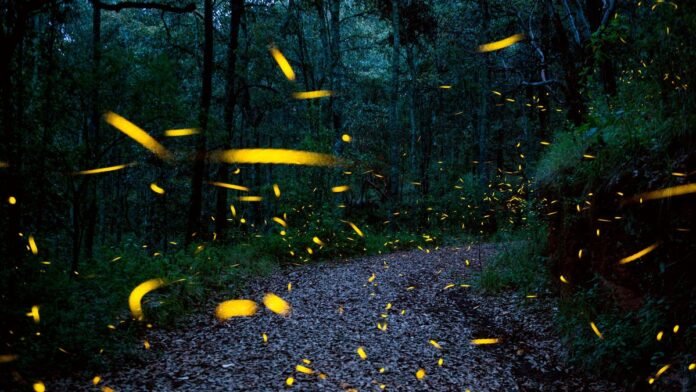Rainy, damp weather along the eastern United States in summer 2025 has one upside: Fireflies love it.
“Fireflies and their prey (snails, slugs, worms) need moisture, so years with high rainfall, particularly in the spring, can boost populations of fireflies in the summer,” said Candace Fallon, a conservation biologist with the Xerces Society for Invertebrate Conservation.
And warm, humid nights of 70 degrees or warmer are ideal for seeing the flashing lights that evoke nostalgia for many Americans, Virginia Tech entomologist Eric Day told USA TODAY.
It’s hard to know for sure, but it appears that the whimsical bugs are indeed thriving in some areas.
What is known: Fears of fireflies’ imminent demise are misplaced, Day said.
“I would say fireflies are threatened due to habitat loss, but they are not going extinct, as some are adapting in different regions,” Day said.
Indeed, of the 175 species of fireflies in the US, only 18 of are “threatened” with extinction, said Fallon. So while it’s not good news for those few species, overall, “I don’t think we’re going to lose fireflies in our lifetimes,” she told USA TODAY.
Are firefly populations up in summer 2025?
Fallon said in an email to USA TODAY that “from anecdotal reports, it does appear that at least the Midwest and Northeast are seeing record numbers of fireflies.”
She added that “we have heard from several areas of the country that folks are seeing an increase in fireflies this year, while in other regions we’re been hearing the opposite.”
Day agreed, noting that it all depends on location, with rural areas typically seeing more fireflies while urban and suburban areas seeing fewer.
Why do people care about fireflies?
Whether you call them fireflies or lightning bugs, these illuminated insects are a sure sign of lazy, hot summer evenings. Many remember the thrill of running after them as a kid, trying to capture them in glass jars.
“Fireflies evoke memories for people,” Day told USA TODAY. “They harken back to our childhoods, reminding us of other times.”
“They’re one of the most pleasant insects to come across… it a good thing to see fireflies,” he added.
Are fireflies a threatened or endangered species?
Day said that generally, the answer to that is yes in urban areas, but to a lesser extent in rural areas.
Fallon explained further: “While there are currently no listed firefly species under the US Endangered Species Act, one species (the Bethany Beach firefly) has been proposed for listing as a threatened species, and two others (the Florida intertidal firefly and Southwest spring firefly) are under review for listing.”
Overall, threatened firefly species are found in 16 states, all the way from Arizona to New York (see map below).
As well, Fallon said two additional species have been petitioned (the mysterious lantern firefly and the loopy five firefly) but the U.S. Fish and Wildlife Service has not yet published 90-day findings on those species (in which they determine whether a full review for listing is warranted), Fallon explained.
What are the main threats to fireflies?
According to Fallon, “firefly populations are threatened by habitat loss and degradation, light pollution (which makes it difficult for fireflies to communicate with one another), pesticide use (which can kill them or their prey, or damage their habitat), and climate change (including drought, sea level rise, and storms).”
How might climate change impact fireflies?
“Because fireflies require moisture, drought related to climate change is a leading threat to fireflies, particularly in the arid West,” Fallon told USA TODAY. “In some places, streams that were once perennial have now dried up, and in other areas, marshy areas and other wetlands have also disappeared. These once-perennial water sources are hugely important to fireflies, and their loss can lead to the loss of local populations.”
Fallon added that on the East Coast, sea-level rise and increased storm surges are having negative impacts on fireflies. In many coastal areas, firefly habitat is already hemmed in by human development on one side and the ocean on the other. As sea level rises, these habitat patches are disappearing.
“In the case of increased severity and frequency of storm surges, the inundation of firefly habitats with saltwater can increase the salinity of a site, changing its vegetative makeup and making it uninhabitable for fireflies,” Fallon said.
